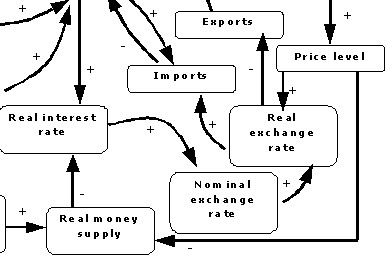Contents:
There will be no entry for the amount of discount granted by the manufacturer to a wholesaler in the books of accounts of both parties. The amount of discount that the wholesaler or retailer receives off the list price, or the difference between the list price and the net price. Trade credit creates an account payable on the books of the company while its recorded as an accounts receivable on the books of the supplier.
For example, a customer who buys 100 units of a product may receive a 20% trade discount, while a customer who buys 70 units of the same product may only receive a 10% trade discount. Trade discounts are offered to promote sales and increase turnover. Typically, the discounted price is subtracted when the item is purchased and the invoice is created. In simple words, a Trade discount is a discount that is referred to as a discount given by the seller to the buyer at the time of purchase of goods.
If your company has the free cash flow to take the discount offered in the terms of credit, then yes. Cost of trade credit is the terms that suppliers offer businesses for trade credit. Trade credit is the amount businesses owe to their suppliers on inventory, products, and other goods necessary for business operation. You can also calculate the sale price automatically, instead of subtracting the discount from the original price.
Journal Entry [Example]: Trade vs. Cash Discount
Any input tax credit attributable to the discount must be reversed by the buyer or recipient of the supply. If you don’t have the cash flow to take the discount, you’re usually better off with a cheaper form of financing. It’s always better to have enough cash flow on hand to take the discount. Divide 360, nominal days in a year, by the sum of full allowed payment days minus allowed discount days .
- According to the terms in our example above, 36.73% is the cost of not taking the discount.
- This is a type of discount that is offered by a supplier to distributors.
- Discounts offered by suppliers may also benefit businesses by reducing their costs.
Next, multiply the original price by the decimal either by hand or by using a calculator. This gives you the discount amount, or what value is being taken off the original price. Then, subtract the discount amount from the original price to figure out the discounted price. If retailers are expected to pay $225 for a suit, a wholesaler has to pay less for it, because the wholesaler’s customers are retailers. Hence the wholesaler must get an additional discount to stay in business.
Divide 360 by days to payment minus the number of discount days. The manufacturer does not record the trade discount in its books. Instead, they record the revenue from the sale at the amount on the customer’s invoice. If they were to record the total sale including the discount, it would inflate the gross sales. Since gross sales are integral to several financial ratios, this would not be an accurate representation.
Next, the discount received by Mr.X of $500 for making the immediate payment is a cash discount, and it is allowed on the invoice price of the goods. The cash discount is to be recorded in the books of accounts. The term “discount” refers to the pricing system in which the price of a commodity is lower than its marked price listed price. https://1investing.in/ It is simply to say, ‘discount’ is a percentage of the listed price. A discount is a kind of price deduction in products that is noticed in consumer transactions, where the buyers have proposed a percentage of rebates on various products in order to boost sales. This rebate offered by the seller to buyer is known as a discount.
The sale price is the list price minus the product of the discount divided by 100 and multiplied by the list price. Subtract the discount value from the list price to arrive at the product’s final selling price. Multiply the discount rate and the product’s list price to find out the value of the discount. Seller pays the shipping when the merchandise is shipped, but the shipping costs are added to the invoice for the buyer to pay . He offered a discount of 20% on its listed price and still gains 10%. If two or more discounts are offered one after the other then such discounts are called the successive discounts or we also call them discounts in series.
Trade Discount Overview and Formula
The term, “discount,” means a deducted amount from the normal price of an item or service. There are many types of discounts that businesses use to incentivize customers. A trade discount is defined as a type of discount that is cut off the retail or published price of an item, and is usually for customers who purchase goods in larger quantities. Some of these customers include wholesalers, retailers, and industrial users.
For example, find a single discount equivalent to two successive discounts of 15% and 12% on an article. While not writing, you can catch me singing Shāstriya Sangeetha and tuning my violin ;). Our trained team of editors and researchers validate articles for accuracy and comprehensiveness. WikiHow’s Content Management Team carefully monitors the work from our editorial staff to ensure that each article is backed by trusted research and meets our high quality standards. Moving the decimal one place to the left, you should see that 10% of $200.00 is $20.00.

Discounts on purchases are a great method to get people into your store quickly. You are more likely to grab a customer’s attention if you tell him he can save money. Discounts are not beneficial to your customers, but they also help in the growth of your business. Discounts might be the secret potion that can help a business thrive.
In this example, David expects to receive a sum of $10,000 after 4 years and its present value has been assessed to be $7,600. Calculate the discount rate if the compounding is to be done half-yearly. WAVE platform encourages your Online engagement with the Master Teachers. Revision notes and formula sheets are shared with you, for grasping the toughest concepts.
This discount calculator allows you to find the reduced price of a product and the amount of money you save. You can also use it for the reverse and calculate the size of the discount or the original price. As a shopper, you it also functions as a sale price calculator to help you negotiate the price.
Journal Entry: How to Record Trade Discounts?
The discount by the manufacturer to the wholesaler is 15%. Compute the gross amount, discount amount, and net amount. As such, the concept of discount rate trade discount formula is very vital in project valuation and so it is important that we choose an appropriate discount rate in order to arrive at the optimum valuation.

To mentally calculate 10% of a price, think of the price written as dollars and cents with a decimal point. You can multiply the decimal by hand, or use a calculator. This will tell you the discount, or what value is being taken off the original price.
Featured Articles
Trade discount is given on the list price or retail price of the goods. Usually, a retail customer will not receive any discount and must pay the entire published price. A manufacturer’s original catalogue list price of a product is $100. No matter how enticing a discount offer is, please keep in mind that you must set aside some portion of your income as savings before expenses. Set a long term goal for your savings with our savings goal calculator and see how much you need to set aside each month. Therefore, the effective discount rate for David in this case is 6.98%.
What’s the Difference Between Trade and Functional Discounts?
For example, if your discount is 30 percent, your remaining price will be 70 percent of its original price. Then, use the same methods to calculate 70 percent of the original price to find your new price. Additional 5% trade discount granted as Reseller A is one of Company A’s best customers. You should find evidence to demonstrate how your company is well suited to the supplier and a company worthy of trust and trade credit.